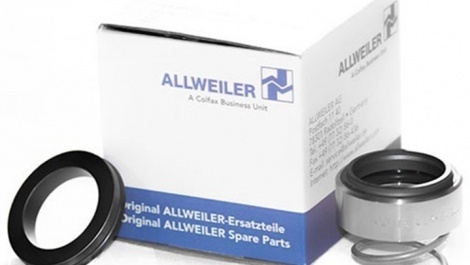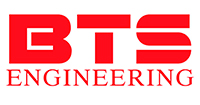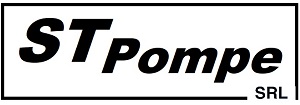News Prom-nasos
November 11, 2021
Replacement of Calpeda NM 40/16CE End Pump Seal

NM pumps manufactured by Calpeda are centrifugal monoblock pumps with a vertical pressure nozzle, a horizontal suction nozzle, and a horizontally positioned shaft. It is used to raise pressure in water supply systems in domestic and industrial networks, in fire-fighting installations, in air conditioning and cooling systems. Cantilever pumps NM 40/16CE are equipped with a mechanical seal R3-X6H62V6 D20 16006040000 , designed for clean non-abrasive liquids with temperatures from -10 °C to +90 ° C. Our specialists have replaced the original mechanical seal with a seal in the materials Graphite/ Silicon carbide / Viton , since such materials are better suited for the vegetable oil medium.

Chemical pump housings, which are presented in our the store can be made from a variety of materials for the buyer's choice, including PP (polypropylene), GFRPP (polypropylene with glass fiber), CFRPP (polypropylene with carbon fiber), PVDF (polyvinylidene difluoride), GFRETFE (Ethylenetetrafluoroethylene, glass fiber reinforced ETFE), CFRETFE (Carbon fiber ETFE) and PTFE .
Among the materials from which the flow parts of chemical pumps are made, polypropylene (PP) has long occupied a prominent place. Such a wide application is due to its relative versatility and cheapness. Polypropylene has a good balance of properties and cost, which most thermoplastics do not achieve. Polypropylene provides easy processing, excellent chemical resistance and good mechanical properties.
However, there are two characteristics in which it is significantly inferior to metals – mechanical resistance and maximum operating temperature.
Relative volumetric abrasive abrasion of various materials in accordance with the method of studying abrasive wear in an abrasive mixture (ISO 15527) – lower values are preferable.
Glass fiber (GFRP) and carbon fiber (CFRP) reinforcement technologies have been developed to improve these performance.
CFRP and GFRP plastics differ primarily in the use of different fibers. Plastics with the addition of carbon fibers have significantly higher strength, and are also lighter due to lower density. CFRP is five times lighter than steel and has only about 60 percent of the weight of aluminum and is used where other materials reach the limit of their load-bearing capacity . Also important properties of CFRP are its high stability, low thermal expansion, and X-ray transparency. The advantage of plastics with the addition of fiberglass is a lower cost and slightly higher resistance to shock loads and shear.
There are no restrictions on the possible use of CFRP. The most common applications of CFRP are aerospace, automotive, and wind power. CFRP is also used in medical engineering, robotics, automation technologies, measurement technology and optics, as well as in Mechanical Engineering and in the sports and recreation sector.
GFRP glass fiber reinforced polypropylene (PP) has better tensile strength, tensile elasticity, higher maximum operating temperature (70°C), better dimensional stability when forming with reduced tensile strength.
Significantly better performance in terms of chemical and mechanical and temperature stability can be achieved by using polyvinylidene difluoride – PVDF as the pump part material. This material has good abrasion resistance, the highest tensile strength of all fluorocarbons except ethylene tetrafluoroethylene ETFE. Good overall chemical resistance and maximum operating temperature up to 95°C. The disadvantages of this material are the high cost, the inability to use reinforcing fibers and poor resistance to concentrated smoky acids.
Ethylenetetrafluoroethylene-ETFE has significant advantages over PVDF. Even at low temperatures, it has high impact strength and is quite rigid by fluoropolymer standards. It can be reinforced with glass fiber and carbon fiber, providing even higher mechanical performance. It has the highest tensile strength similar to polypropylene. Its chemical resistance is not inferior, although not as good as that of PTFE, especially to ketones and halogenated hydrocarbons.
Glass fiber reinforced (GFRETFE) or carbon fiber reinforced (CFRETFE) ethylene tetrafluoroethylene has increased tensile strength, tensile modulus, higher resistance to high temperatures, and less linear expansion compared to unmodified ETFE.
PP / GFRPP material can withstand temperatures up to 75 ℃. PVDF material can withstand temperatures up to 95 ℃. CFRETFE material can withstand temperatures up to 150 ℃.
The correct choice of pump housing material depends on the type of chemical that the equipment will pump and its concentration.
● – excellent
○ – good
△ – satisfactory
× - bad
September 21, 2021
Repair and replacement of the mechanical seal, pump CDLF 8-200, dearator water of the boiler DKVR 6.3

Causes of wear of the friction pairs of the mechanical seal of the feed pump of the boiler DKVR.
As a result of the operation of the pressure increase pump of a steam boiler, a feed pump operating on the supply of deaerator water without a bypass, for de-airing the chamber of the mechanical seal installation.
Reasons: when the water supply pressure from the deaerator, water increases at a temperature of 105 C, a vacuum occurs at the pump suction, which leads to boiling and the formation of micro-bubbles of steam, which, with the design feature of vertical centrifugal pumps, fall into the upper chamber of the pump, where the mechanical seal is installed. As a result, the mechanical seal also works "dry". An example of a photo of mechanical seal wear in a vertical centrifugal pump of the CR GRUNDFOS, WILO MVI, CALPEDA, DAB, SPERONI, CDLF type. The whole difference is in the brand, and not in the principle of operation and the device of the pump.
We provide our customers with service and warranty support, post-warranty service and the supply of spare parts for pumps throughout the entire service life.
September 14, 2021
Repair of the ALLWEILER AG NTT pump for thermal oil 350 С

Overheated oil pump for thermal boilers, bitumen heating, hot oil pump ALLWEILER
Our company offers mechanical seals for ALLWEILER pumps
Replacement of pump bearings ALLWEILER AG NTT
Replacing the mechanical seal of the ALLWEILER pump
Assembling the pump
Our company performs high-quality repair of pumps and the sale of new equipment with an extended warranty of 24 months.
+38 095 6563757
+38 067 3607101
+38 0362 62-20-33

The BTS Engineering company offers decanter centrifuges for processing sunflower and rapeseed foots , which contains 25% of dry goods – it is a precipitate that is formed during the production of vegetable oil. The basis of the non-fat complex of sunflower foots are phospholipids, protein and mucous substances of the starting oil. Sunflower foots has a high nutritional and energy value, it is processed at a temperature of 30 70 C
We propose to divide the foots obtained during production in order to obtain a dehydrated cake, feed and filtrate with a minimum content of suspended solids for further purification.
The quality of the filtrate after the centrifuge based on the above input parameters:
The solid content in the filtrate (separated oil) at the output is 0.5 - 0.3 % of DS
Sunflower or rapeseed foots are secondary product that appears in the manufacture of unrefined sunflower or rapeseed oil. It is often used in chemical and feed mills. Fats are isolated from the foots, which are used in the production of drying oil.
The product is rich in fats and proteins. Therefore, it is part of the feed that makes up the daily diet of animals and birds. This supplement has a positive effect on the reproductive function, strengthens the immune system, improves growth and quality

Inlet of stillage filtrate after decanter 14000 kg at 3.5% dry matter. Evaporated moisture capacity 12600 kg / h
Concentrate: 1400 kg / h at 35% DM
Steam consumption 3458 kg / h at 6 bar
Recycled water consumption 250 m3 per hour
The total electrical power of the equipment is 118 kW
Platform dimensions 13 mx 5 mx 16 m
After evaporation of vinasse, the condensate is processed and sent to the technology, and the concentrate, after the evaporation plant, is sent to drying.
July 16, 2021
Pump for tug, daily drain

Pump for seawater with mechanical impurities and oil residues for daily drying. Our offer focuses on quality, durability and ease of use. There is a compressed air in compressor on tugboats and other water transport, that can be used to supply air to diaphragm pneumatic pumps, daily dehumidification pumps.
Ease of use and reliability! Long service life! Reliability !!!

The working position of the elements of the set of the hose-drum sprinkler machine provides:
the installation of a tractor-towed chassis with a hose wound on a drum at the hydrant of the pressure pipeline, which is connected to the pump
the unwinding the hose by dragging it with a tractor and laying it on the irrigation site in the sprinkling zone.
the installation of a platform trolley with a sprinkler at the end of the moistened irrigation zone.
the connecting the sprinkler to the hose and connecting the hose to the hydrant of the irrigation system.
the supply of irrigation water to the water supply hose and the inclusion of the sprinkler in operation (watering).
as watering proceeds, the hose is automatically wound at a certain speed on a drum driven by a turbine hydraulic drive (under the pressure of water coming from a pump to a hydraulic turbine or by means of a separate winding mechanism driven by a tractor.
under the force transmitted to the hose during its winding, the trolley with the sprinkler moves in the direction of the hydrant, thanks to which a strip of agricultural land is watered with a width of 30 to 90 meters and a length of up to 300 to 600 meters or more, depending on the model and size of the hose-drum set of the sprinkler machine.
Judging by the technology of work on the irrigation site, the hose-drum sprinkler device, the hose-drum device of rain irrigation to varying degrees refers to sprinkler installations and sprinkler machines. Due to the lack of its own propulsion for moving from one irrigation site to another and the need to use a self-propelled mechanism separate from the device when installing the sprinkler in the initial working position, the sprinkler (rain irrigation) under consideration refers to sprinkler installations. And on the basis of the presence of its own means for moving the sprinkler on the irrigation site during the irrigation process, this sprinkler can be attributed to sprinkler machines.
To date, a significant number of various domestic and imported designs and standard sizes of hose-drum sprinklers have been developed, some of which are discussed below.
This circumstance determines the possibility of using synonymous use of terms in the subsequent presentation: "hose sprinkler", "hose drum sprinkler", "hose drum unit" and (or)"hose drum sprinkler machine".

Diaphragm pump for detergents, gel, liquid soap, the ability to pump viscous products with active substances. Suitable for pumping viscous liquids and adhesives.
The pump is suitable for unloading and loading onto vehicles, as well as packing in euro cubic meters. Productivity of the DP series 15 to 20 m3 per hour. The ability to use in categorized rooms.

High-temperature cantilever pump ALLWEILER NTT - for pumping thermal oil, self-cooling. Pumps are used in particularly harsh conditions: asphalt production, mineral wool production, oil industry - processing of dark oil products, bitumen production, heating of bitumen tanks, paint and varnish industry, food industry, production of plastics, tires, rubber, roofing, etc. Accordingly, the mechanical seal must be as durable and reliable as possible.
BTS seals fully meet these criteria, using Viton rubber (fluoroelastomer), solid carbon, antimony-impregnated / SSic, silicone carbide.
Shaft seal U5A (item 433.02) - uncooled, maintenance free, unbalanced. In front of the mechanical seal there is a safety stuffing box with the next throttling zone. Even if the mechanical seal fails, these additional safety elements prevent fluid from leaking. It is guaranteed that any leakage heat escaping from the shaft seal is safely discharged through the LO leakage outlet and fully collected. Due to the special design of the integrated unit, the temperature is reduced to such an extent that proper functioning of the bearing and shaft seal is ensured.





























































































































